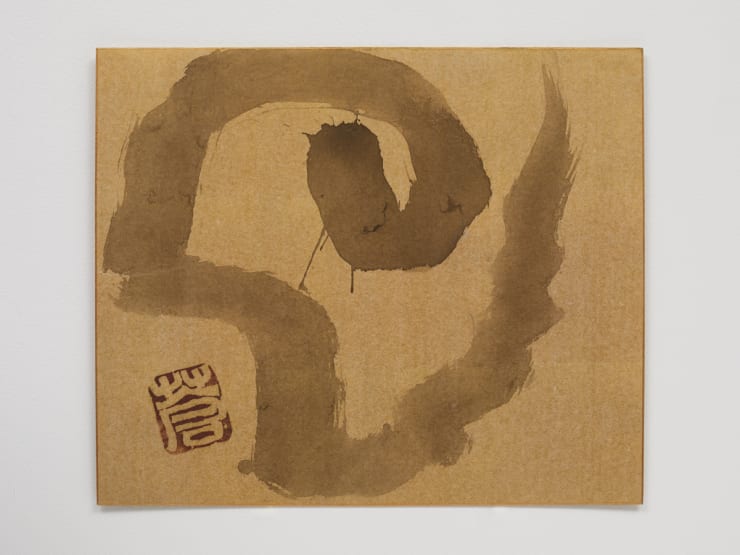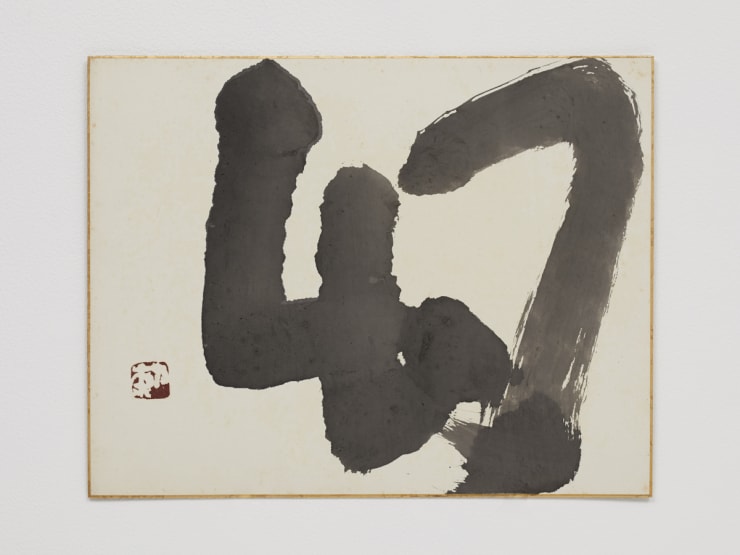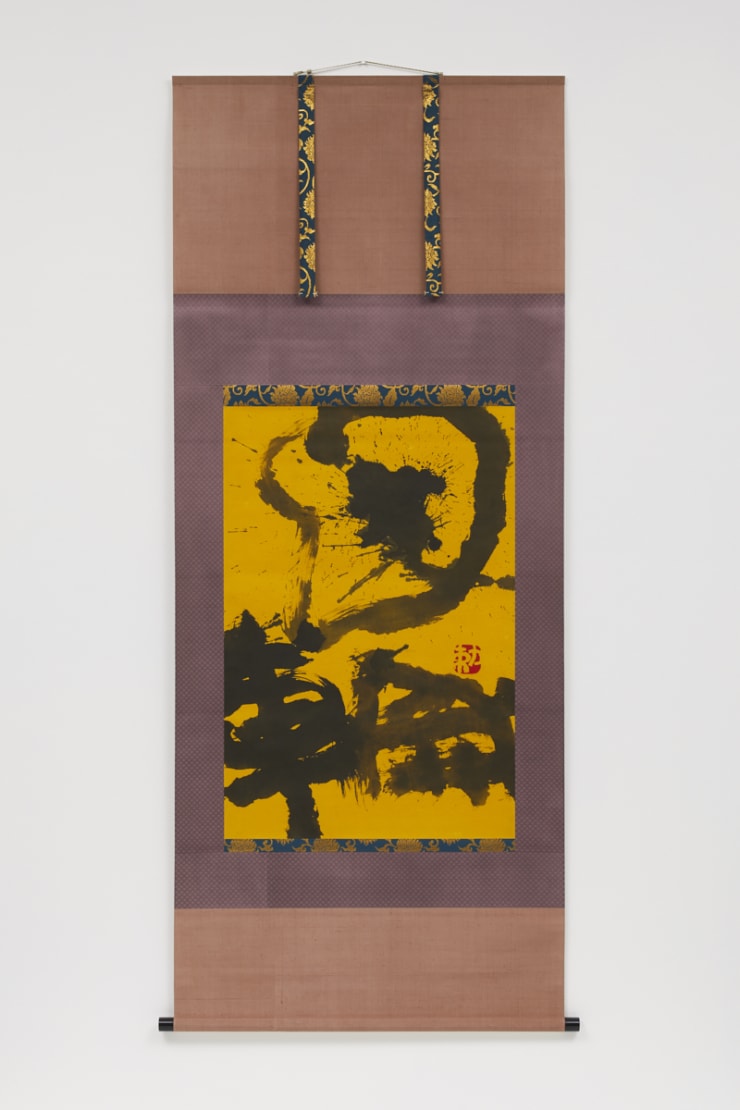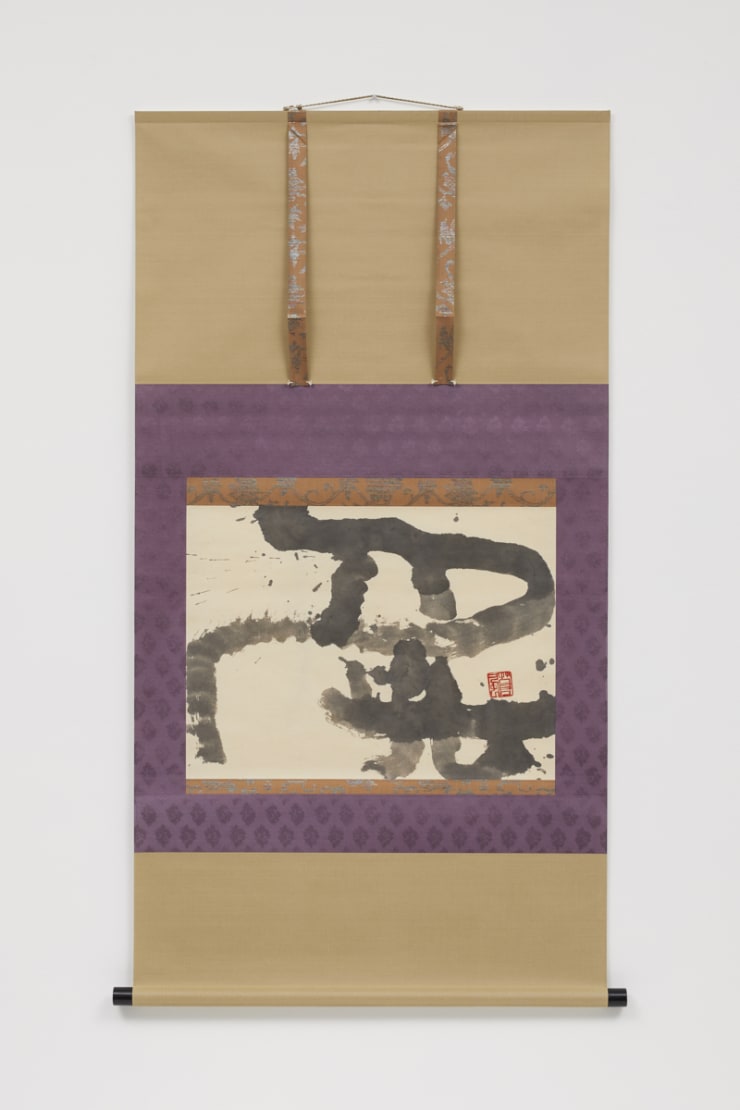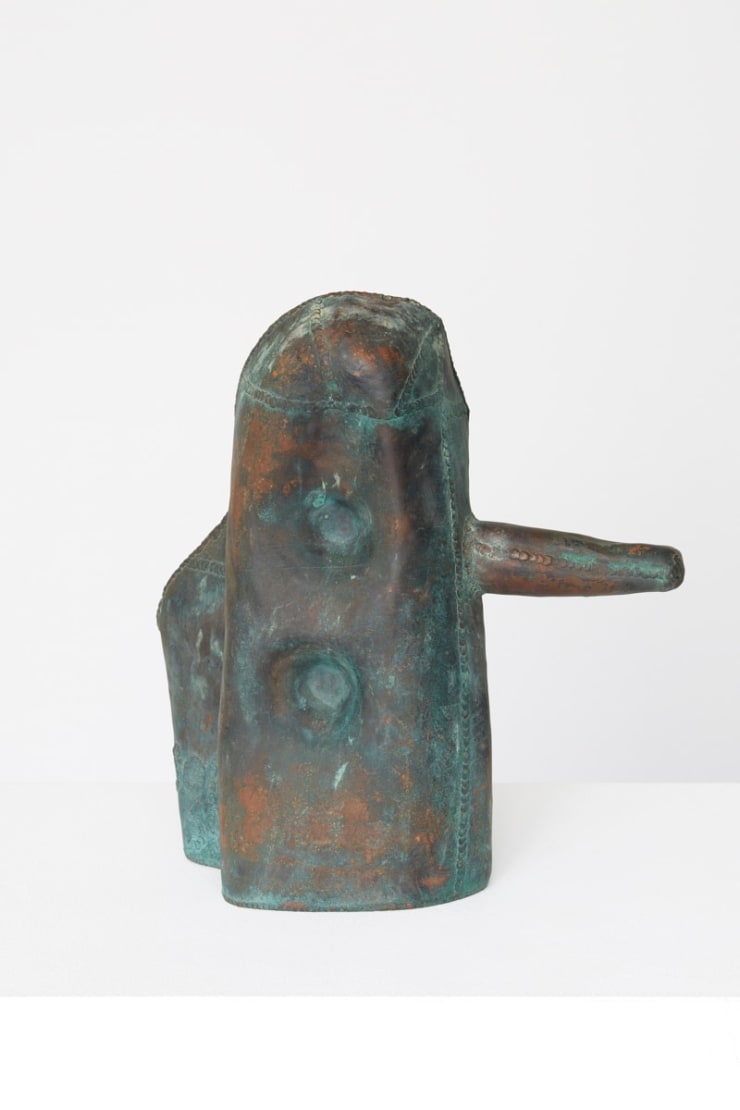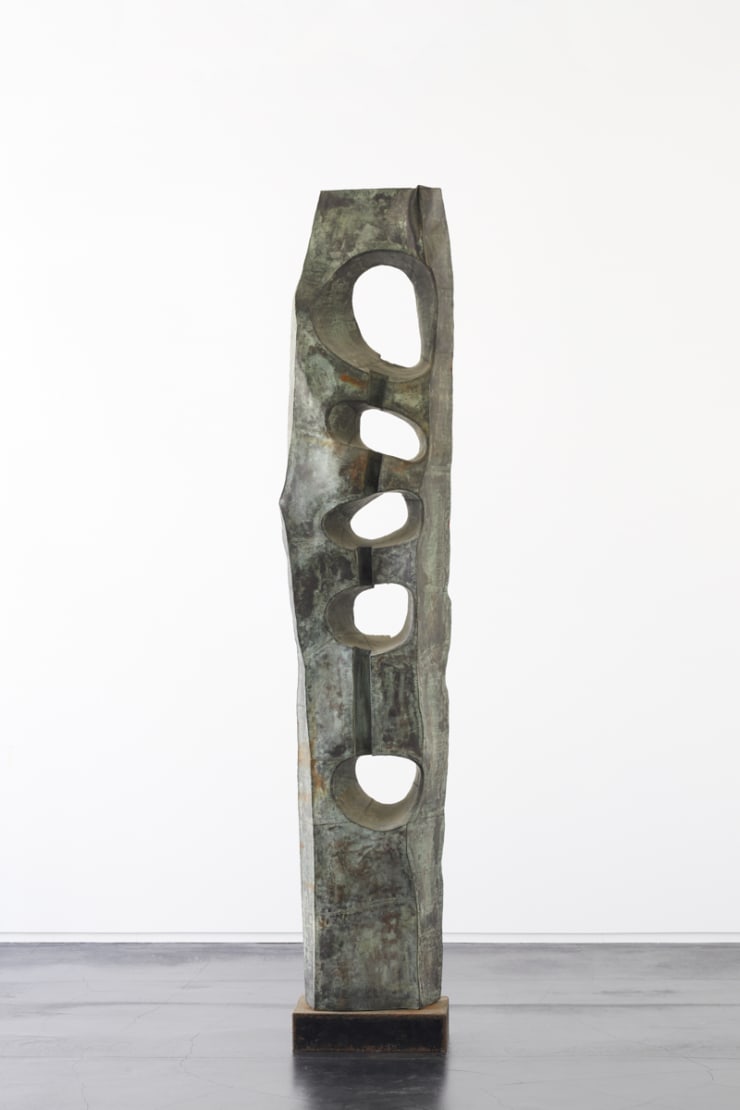Sofu Teshigahara
Sofu Teshigahara (1900–1979) was a pioneering Japanese artist renowned for revolutionizing the traditional art of ikebana (flower arranging) and expanding his creative practice into sculpture, painting, calligraphy, and collage. Born in Tokyo in 1900, during the transformative Meiji Era, Sofu was the eldest son of ikebana artist Wafu Teshigahara. Trained in ikebana and calligraphy from childhood, he demonstrated exceptional talent, earning the nickname “Little Teacher” by age thirteen. However, his dissatisfaction with the rigid formalities of traditional ikebana led him to break away from his father’s school in Osaka and establish the Sogetsu School of Ikebana in Tokyo in 1927.
The Sogetsu School, named “Grass Moon,” became a cornerstone of the postwar avant-garde ikebana movement, emphasizing free expression and the use of unconventional materials like scrap metal, stone, and wood. Sofu’s innovative approach attracted millions of students and earned him international acclaim, with TIME Magazine dubbing him the “Picasso of Flowers.” His exhibitions, starting with the first Sogetsu show in Ginza in 1929, expanded globally from the 1950s to 1970s, showcasing his work in Europe and the United States. Notable solo exhibitions included venues like the Palais Galliera in Paris (1971) and the National Museum of Modern Art in Kyoto (1967).
Beyond ikebana, Sofu’s multidisciplinary practice drew inspiration from Japanese mythology, particularly the 8th-century Kojiki, and postwar avant-garde movements like Art Informel and the Gutai group. His sculptures, often untitled, combined materials like iron, copper, and wood, evoking ancient Japanese aesthetics while embracing modernist experimentation. French art critic Michel Tapié praised his work for its “experimental savoir vivre” and resonance with Japan’s pantheistic heritage.
Sofu’s influence extended to cultural patronage. In collaboration with his son, filmmaker Hiroshi Teshigahara, he founded the Sogetsu Art Center in Tokyo, a hub for avant-garde performances by artists like John Cage, Yoko Ono, and Merce Cunningham in the 1960s. His contributions earned him prestigious honors, including the Order of Arts and Letters (1960) and the Legion of Honor (1961) from the French government, as well as Japan’s Minister of Education Art Encouragement Prize (1962).
Sofu Teshigahara passed away in 1979, leaving a legacy as a visionary who bridged traditional Japanese aesthetics with global modernist movements. His work continues to inspire contemporary artists and is celebrated in retrospectives, such as the 2024 Yokohama Triennale.
-
 Sofu TeshigaharaShizen (Nature), n.d.Ink on paper14 15/16 x 17 7/8 in
Sofu TeshigaharaShizen (Nature), n.d.Ink on paper14 15/16 x 17 7/8 in
37.9 x 45.4 cm -
 Sofu TeshigaharaKumo (Clouds), n.d.Ink on paper14 15/16 x 17 7/8 in
Sofu TeshigaharaKumo (Clouds), n.d.Ink on paper14 15/16 x 17 7/8 in
37.9 x 45.3 cm -
 Sofu TeshigaharaMaboroshi (Phantom), n.d.Ink on paper12 1/2 x 16 in
Sofu TeshigaharaMaboroshi (Phantom), n.d.Ink on paper12 1/2 x 16 in
31.7 x 40.5 cm -
 Sofu TeshigaharaNichirin, n.d.Hanging scroll, ink on paperPaper size: 36 5/8 x 24 11/16 in
Sofu TeshigaharaNichirin, n.d.Hanging scroll, ink on paperPaper size: 36 5/8 x 24 11/16 in
Scroll size: 80 1/2 x 33 1/8 x 1 1/4 in
Paper size: 92.9 x 62.6 cm
Scroll size: 204.5 x 84 x 3.2 cm -
 Sofu TeshigaharaGekko, n.d.Hanging scroll, ink on paperPaper size: 17 7/16 x 23 9/16 in
Sofu TeshigaharaGekko, n.d.Hanging scroll, ink on paperPaper size: 17 7/16 x 23 9/16 in
Scroll size: 56 15/16 x 30 1/4 x 1 1/4 in
Paper size: 44.2 x 59.8 cm
Scroll size: 144.6 x 76.8 x 3.1 cm -
 Sofu TeshigaharaMaboroshi (Phantom), n.d.Ink on paper mounted on boardPaper size: 12 x 15 5/8 in
Sofu TeshigaharaMaboroshi (Phantom), n.d.Ink on paper mounted on boardPaper size: 12 x 15 5/8 in
Board size: 16 11/16 x 20 1/4 x 3/4 in
Paper size: 30.5 x 39.6 cm
Board size: 42.3 x 51.4 x 1.8 cm -
 Sofu TeshigaharaRyusui (流水), 1977India ink and silver foil on paper, on wood panel.35-3/4 x 68-7/8 inches
Sofu TeshigaharaRyusui (流水), 1977India ink and silver foil on paper, on wood panel.35-3/4 x 68-7/8 inches
90.8 x 175 cm -
 Sofu TeshigaharaTitle Unknown, 1969Bronze12 5/8 x 11 7/16 x 6 5/16 in
Sofu TeshigaharaTitle Unknown, 1969Bronze12 5/8 x 11 7/16 x 6 5/16 in
32 x 29 x 16 cm -
 Sofu TeshigaharaTachi (Sword) , 1968Bronze98 7/8 x 21 5/8 x 15 in
Sofu TeshigaharaTachi (Sword) , 1968Bronze98 7/8 x 21 5/8 x 15 in
251 x 55 x 38 cm -
 Sofu Teshigahara"Uzume" from "Kojiki" series, 1960Bronze.28 x 36-1/4 x 22 inches
Sofu Teshigahara"Uzume" from "Kojiki" series, 1960Bronze.28 x 36-1/4 x 22 inches
71 x 92 x 56 cm -
 Sofu TeshigaharaTitle Unknown, 1950s-1970sWood, brass68 1/8 x 41 3/8 x 23 5/8 in
Sofu TeshigaharaTitle Unknown, 1950s-1970sWood, brass68 1/8 x 41 3/8 x 23 5/8 in
173 x 105 x 60 cm -
 Sofu Teshigahara(title unknown), 1950s-1970sWood, brass.10-1/4 x 18-1/2 x 13 inches
Sofu Teshigahara(title unknown), 1950s-1970sWood, brass.10-1/4 x 18-1/2 x 13 inches
26 x 47 x 33 cm -
 Sofu TeshigaharaTitle unknown , 1950s - 1970sWood, brass25 5/8 x 17 3/4 x 11 13/16 in
Sofu TeshigaharaTitle unknown , 1950s - 1970sWood, brass25 5/8 x 17 3/4 x 11 13/16 in
65 x 45 x 30 cm


